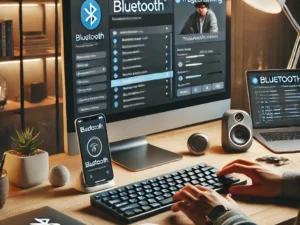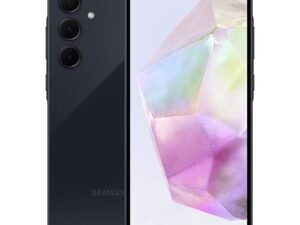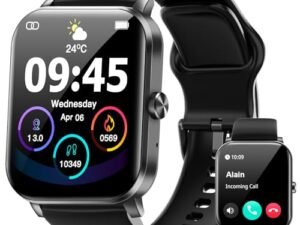When we’re in the market for a new laptop, it’s easy to feel overwhelmed by the multitude of options available. It’s important to consider our individual needs and how we intend to use our new devices.
We’re students looking for an affordable option to handle coursework. Professionals need a robust machine for business applications. Gamers seek high-performance hardware. There’s a laptop that fits our requirements.

Understanding the key factors is crucial. These factors include processing power, memory, storage, and battery life. It helps in making an informed decision.
Our choice of operating system will influence our experience and application compatibility. We can choose between Windows, macOS, or Chrome OS.
It’s not just about the specifications. The form factor and build quality can affect usability and durability. This is essential if we plan to carry the device with us regularly.
We should also keep an eye on the market for the best time to buy your laptop. We can take advantage of sales and promotions to get the best value for our money.
We can narrow down our choices and pick the laptop that best suits our lifestyle and budget. This applies whether we prefer shopping online or visiting a physical store. Preparing beforehand can help.
Purpose and Usage
It’s crucial to understand our primary purpose and how we’ll use a laptop before buying one. It ensures that the laptop we choose aligns perfectly with our needs. This is whether for personal entertainment, professional tasks, or on-the-go computing.
Personal vs. Professional Use
For personal use, we might prioritize a user-friendly operating system. We might also prioritize features that support everyday activities. These include web browsing, streaming videos, and running basic applications.
If we want a laptop for professional use, we’d look for one with robust performance capabilities. For example, a powerful processor and extra RAM. This helps the laptop handle multitasking and professional software efficiently.
Gaming Requirements
If gaming is our goal, the specifications take a significant leap. We require high-end graphics cards like NVIDIA or AMD. Also, we need a fast refresh rate display and substantial RAM. A gaming laptop should also have a strong cooling system. It keeps things running smoothly during intense gaming sessions.
Mobility Needs
Portability is key for those of us always on the move. We’ll want a laptop that’s lightweight and has a strong battery life. Display size matters too. A 13 to 14-inch laptop offers a good balance between usability and portability.
If we travel often, we may also consider additional factors. For example, durability and a comfortable keyboard.
Budget Considerations

When we’re looking to buy a new laptop, the price tag is often one of the first things we check. It’s important to set a realistic budget that reflects our needs. It should not break the bank. Laptops come in a wide range of prices. Determining our spending limit helps narrow down our choices.
Decide on the purpose: Our budget should align with why we need the laptop. Is it for everyday tasks, gaming, or professional use? For basic tasks, we might consider getting a budget laptop.
However, if we’re into gaming or video editing, we might need to allocate a larger budget for better performance.
-
- Look for the best value: Look for the best value. We want to find a laptop within our budget. It should offer the best combination of features and performance.
-
- Processor: Aim for at least an Intel i5 or equivalent AMD processor.
-
- RAM: For most users, 8GB is a good baseline.
-
- Storage: SSDs are faster than HDDs and worth the extra cost if we can afford it.
-
- Look for the best value: Look for the best value. We want to find a laptop within our budget. It should offer the best combination of features and performance.
Consider long-term costs: Sometimes a slightly higher initial investment can mean savings in the long run. A more expensive laptop might have a better build quality and last longer. Ultimately, offering better value for money.
We should keep an eye out for discounts during back-to-school sales. We should also watch for them during Black Friday or Cyber Monday. It’s not uncommon to find high-quality laptops at a fraction of their usual price during these sales windows.
By keeping these considerations in mind, we can ensure we’re making a well-informed decision. It will balance our budget with our technological needs.
Operating System
Choosing an operating system (OS) is foundational to our laptop experience. It affects nearly everything we do on our machine. Let’s explore the popular options and their primary benefits.
MacOS
MacOS is known for its seamless integration across Apple’s ecosystem of devices. If we’re already using an iPhone or iPad, a Mac will complement our existing suite of products flawlessly. Plus, the MacOS is praised for its sleek design and strong security features.
Windows
Microsoft’s Windows OS is extremely versatile. It is suitable for a wide range of users, from professionals to gamers. It’s compatible with a vast array of software and hardware. As a result, laptops running Windows offer a wide range of models and configurations.
Linux
We value Linux for its open-source nature. It allows us greater control over our computing environment. It’s especially favored by developers and those who prioritize customization and free software. However, those unfamiliar with its intricacies may find it harder to learn.
Chrome OS
Chrome OS, found on Chromebooks, is designed around the cloud. It is also designed around Google’s suite of applications. It’s a good choice for users who need a laptop for web browsing, streaming, and light productivity tasks. People know this OS for its streamlined design, high security, and user-friendly interface.
Hardware Specifications
When we’re in the market for a new laptop, it’s crucial to understand the hardware specifications. These specs determine the performance and usability of the laptop for our specific needs.
Processor (CPU)
The processor is the brain of our laptop. It impacts everything from system speed to multitasking capabilities. For high-efficiency tasks, we might want processors like Intel’s Core i7 or i9, or AMD’s Ryzen series. Lighter use, such as web browsing, can be well-served by an Intel Core i3 or i5.
Memory (RAM)
RAM is our laptop’s short-term memory, allowing us to run multiple applications smoothly. We should look for at least 8GB of RAM. However, 16GB or more is ideal for demanding processes or future-proofing.
Storage (HDD/SSD)
Storage is where all our data resides. A Solid State Drive (SSD) is faster, quieter, and more durable than a traditional Hard Disk Drive (HDD). We typically recommend an SSD with at least 256GB of space. This will provide a significant speed boost and ample storage.
Graphics Card (GPU)
The Graphics Processing Unit (GPU) is essential for gaming, video editing, or 3D rendering. For most tasks, integrated graphics, like Intel’s Iris Xe or UHD series, are sufficient. Dedicated GPUs from NVIDIA or AMD are preferred for heavy graphics work.
Display
The display affects how we experience everything on our laptop. It impacts text clarity and color accuracy. Look for a resolution that’s at least 1920×1080 (Full HD). For creative work, a higher resolution or color-accurate display might be important.
Battery Life
Finally, battery life determines how long we can use our laptop unplugged. We’ll want a laptop that offers several hours of battery life. Some models advertise up to 12 hours.
However, actual usage will often be lower. So, it’s wise to look for third-party tests or user reviews for more accurate information.
Brand and Model

When we’re in the market for a new laptop, one of the first decisions we encounter is choosing the right brand and model. Each brand has its unique strengths and customer service reputation.
For example, Apple’s MacBook line is famous for its sleek design and macOS integration. Dell offers a wide range of models tailored to different uses.
The model we choose should align with our individual needs:
-
- Performance: High-end models like the MacBook Pro or the Dell XPS are suitable for demanding tasks like video editing and gaming.
-
- Portability: Ultraportable models such as the MacBook Air or the Lenovo Yoga are great for on-the-go use.
-
- Budget: Brands like Acer and ASUS offer more affordable models that still provide reliable performance.
It’s also crucial to look at the support and warranty services provided by the brand. Some brands offer extensive warranties or added services, which can be a lifesaver if we run into issues down the line. Check out discussions on Laptop Buying Guide: 8 Essential Tips | Laptop Mag. Find insights on brand reliability and customer support.
We must also consider the ecosystem we’re already a part of. For instance, if we use many Google services, a Chromebook from Samsung or HP may seamlessly integrate into our workflow.
Remember, the brand we choose sets the stage for our overall satisfaction, so it’s worth doing our due diligence!
Build Quality and Design
When we look for a new laptop, we need to consider how well it’s built and its overall design. These factors directly affect durability and user experience.
Material
Laptops are primarily built from two types of materials: plastics and metals. Plastic casings are typically more affordable. However, they might not provide the same level of protection as metal. On the other hand, those made with aluminum or magnesium are not only sturdier, but they also give a more premium feel. However, these materials can add to the cost of the laptop.
Weight and Form Factor
We must also consider the weight and form factor of our laptop. Heavier laptops can be more robust, but they aren’t as portable. We’re often looking for a balance – a laptop that’s light enough to carry around, yet durable enough to withstand daily use. Ultrabooks and convertibles are great for on-the-go users. They have slim profiles and often weigh less than traditional laptops.
Keyboard and Touchpad
When we look for a new laptop, our consideration of the keyboard and touchpad is critical. This is especially true if we’ll be spending a lot of time typing or navigating through software. Let’s dive into what we should keep an eye on:
-
- Key Layout and Size: Is it full-sized? Are the keys well spaced? If you work with numbers often, ensure you pick a laptop with a numeric keypad.
-
- Key Travel: How far do the keys go down when pressed? A good travel distance can make typing more comfortable and accurate.
-
- Tactile Feedback: Do the keys have a satisfying click? Do they feel too soft or too stiff?
-
- Backlighting: For us working late into the night, a backlit keyboard is a lifesaver.
Here’s what we consider for touchpads:
-
- Responsiveness: Does it register all your swipes and gestures accurately?
-
- Multi-Touch Gestures: Modern touchpads support gestures like pinch-to-zoom or two-finger scrolling. You’ll want a touchpad that keeps up with complex gestures.
-
- Size: A larger touchpad generally gives us more room for gestures. Remember, though, bigger isn’t always better if it impacts typing comfort.
-
- Surface Material: A smooth, glass-like feel can allow for better finger glide and precision, which is essential for our everyday use.
We must not overlook these aspects because the keyboard and touchpad are the primary tools for interacting with our laptops. If you can, try them out in a store to get a feel for what works best for you.
Ports and Connectivity
When considering a laptop, it’s essential for us to examine the types of ports and connectivity options available. These determine how well the device can interface with other equipment. They also affect data transfer speed and influence overall user experience.
USB Ports
USB ports are the most common connectivity feature on laptops. We need to look for both USB Type-A and USB Type-C ports. USB Type-C is increasingly favored for its fast transfer speeds and reversible design. Many laptops include this slim port, and it’s also used for charging.
HDMI/DisplayPort
For video output, HDMI and DisplayPort are crucial. We want to ensure our laptop can connect to monitors, projectors, and TVs. An HDMI port is standard for high-definition video output. Some laptops might also offer DisplayPort, which can carry similar or greater resolutions.
Audio Jack
Despite the rise of Bluetooth headphones, an audio jack is still relevant. We need to check if the laptop includes a standard 3.5mm audio jack for headphones or microphones. It’s a reliable way to connect audio devices, especially when wireless options are unavailable.
Wireless Connectivity
Our laptop’s wireless capabilities, such as Wi-Fi and Bluetooth, affect how we connect to the internet. They also help us pair devices without cords.
We should look for Wi-Fi that supports at least the 802.11ac standard, and if it’s for travel or where Wi-Fi is unreliable, consider an ethernet port option. Bluetooth is ideal for connecting peripherals like mice, keyboards, and headsets.
Warranty and Support
When we consider purchasing a laptop, evaluating the warranty and support options is crucial. Warranties can vary greatly between different manufacturers and models. It’s important to choose a plan that aligns with our usage and needs.
Key Points to Consider:
-
- Coverage: Determine what the warranty actually covers. Is it a limited warranty or does it include accidental damage? Remember, some actions like upgrading components might void the warranty.
-
- Duration: Warranties typically range from 1 to 3 years. A longer warranty might be beneficial if we plan to use the laptop extensively.
-
- Brand-Specific Limitations: Some warranties may not cover every laptop brand, so it’s wise to ensure ours is included (Laptop Mag).
-
- Service Type: Will repairs be done on-site, or will we need to ship our laptop for service? The convenience of the service type offered can vary.
-
- Extended Warranty: Consider whether buying an extended warranty for your laptop is worth the additional cost. Base your decision on our expected laptop usage.
| Warranty Factor | What to Check |
|---|---|
| Coverage | Accident? Theft? Parts and Labor? |
| Duration | 1, 2, or 3+ years? |
| Brand Limitations | Is our brand covered? |
| Service Type | On-site or Ship-in? |
Understanding warranty terms is as important as comparing the hardware specs. We should read the fine print carefully to avoid surprises if service is needed. If our needs are specific, comparing plans can save us hassle and expense in the future.
Some plans require purchasing within a certain timeframe after our laptop purchase. Overall, a good warranty can be a lifesaver in our tech-driven world.
Reviews and Recommendations
When we’re on the hunt for a new laptop, sifting through countless options can be daunting. That’s where reviews and recommendations come into play.
We look for credibility and depth in laptop reviews. We ensure that the evaluations come from genuine users. We also rely on expert tech reviewers. It’s their job to thoroughly test laptops.
-
- Consumer Reports: They pride themselves on providing unbiased reviews. They buy and test everything themselves, offering insights we trust. For more on their latest laptop reviews, you can check out Consumer Reports.
-
- Best Product Guides: Websites like BestReviews do the heavy lifting for us. They buy, test, and compare laptops to suggest the best picks. To see their latest top laptops, visit BestReviews.
Before we make a decision, we also explore:
-
- User ratings on e-commerce platforms to gauge peoples’ day-to-day satisfaction.
-
- Professional tech sites for in-depth analysis on performance and value. For instance, you can get a comprehensive buying guide at Laptop Mag. It breaks down laptop specifics.
We create a balanced view by combining what we learn from professional reviewers. We also consider user experiences and our own hands-on time. We do hands-on time at stores or via demo units if available.
We remind ourselves to check for recent reviews. Tech changes rapidly. A top pick six months ago may have been surpassed by newer models.
As a Summary of What Factors to Consider When Buying a Laptop
When purchasing a laptop, consider your individual needs and how you intend to use it. Key factors include processing power, memory, storage, and battery life. Operating systems like Windows, macOS, or Chrome OS can influence your experience.
They may also affect application compatibility. Form factor and build quality can affect usability and durability.
When choosing a laptop, consider your primary purpose. Also, think about gaming requirements, mobility needs, budget considerations, and operating system. When choosing a personal use operating system, prioritize user-friendly features. Also, prioritize features that support everyday activities.
Mobility needs include portability, lightweight laptops, and a 13 to 14-inch display size. For frequent travelers, consider durability and a comfortable keyboard.
Consider budgeting realistically based on your needs. Determine your purpose and seek the best value. Also, consider long-term costs. Check for discounts during back-to-school sales, Black Friday, or Cyber Monday.
Choosing the right operating system (OS) is crucial for a laptop experience. It affects nearly everything we do on the machine. Popular options include MacOS, Windows, Linux, and Chrome OS. MacOS is known for its seamless integration across Apple’s ecosystem.
The processor impacts system speed, multitasking capabilities, and graphics performance. RAM should be at least 8GB, while storage should be at least 256GB. Graphics are essential for gaming, video editing, or 3D rendering. The display
should be at least 1920×1080 (Full HD) for text clarity and color accuracy. Battery life should be several hours, with some models offering up to 12 hours.
When choosing a laptop, consider its build quality and design. These directly impact its durability and user experience. Materials like plastics and metals are commonly used. Plastic casings are more affordable but do not provide the same level of protection.
Weight and form factor are also important. Heavier laptops are more robust but less portable. The keyboard and touchpad are crucial. Factors like layout, size, travel distance, tactile feedback, and backlighting are important.
Ports and connectivity options are essential for a laptop’s interface with other equipment. They also affect data transfer speed and overall user experience. Look for USB Type-A and Type-C ports. Also, look for HDMI/DisplayPort for video output. Check for a 3.5mm audio jack for headphones or microphones.
Lastly, look for Wi-Fi and Bluetooth capabilities. Ensure the laptop supports at least 802.11ac standard Wi-Fi. Consider an ethernet port for travel or unreliable Wi-Fi.
Warranty and support are crucial. Laptops often offer a limited lifetime warranty. Ultimately, a laptop’s build quality, weight, and form factor greatly impact the overall user experience. The choice between them will determine the user’s experience. The keyboard and touchpad, ports, and connectivity options also play a role. The warranty and support also matter.
When purchasing a laptop, evaluate the warranty and support options. Make sure they align with your usage and needs. Understanding warranty terms is crucial for comparing hardware specs. It can help you save on future costs.
Reviews and recommendations are also important when searching for a laptop. They provide credibility and depth from genuine users and expert tech reviewers. Consumer Reports and Best Product Guides offer unbiased reviews and insights.
When choosing a laptop, consider factors such as size, weight, performance, essential components, brand, operating system, battery life, gaming or graphic design features, and battery life for travel or work.
When choosing a brand and operating system, consider compatibility and software compatibility. Also, think about cloud-based simplicity.
Asked Questions of What Factors to Consider When Buying a Laptop
As we search for the perfect laptop, we often have questions about balancing size, performance, and features. Here are some common inquiries. They can shed light on the most important aspects of choosing a new laptop.
How can I determine the best laptop size and weight for my needs?
When we look for a laptop, considering the balance between portability and usability is key. Laptops typically range from 11 to 17 inches. If you’re frequently on the move, a lighter and smaller laptop might be your best bet. Larger screens benefit tasks that require more visual space, such as editing or gaming.
What are the essential components to look at when comparing laptop specifications?
A laptop’s performance is defined by its core components. These include the processor (CPU), graphics card (GPU), storage (HDD or SSD), and memory (RAM).
Prioritize these based on how you’ll use it. Choose based on general productivity, gaming, or multimedia creation. Ensure that your laptop can handle your typical tasks.
What is the ideal amount of RAM for a laptop to ensure smooth performance?
For most users, 8GB of RAM is the baseline for ensuring smooth multitasking. However, if you’re into gaming or content creation, we’d suggest aiming for at least 16GB. For heavy-duty tasks or future-proofing, you might consider 32GB or more.
How do I decide between different laptop brands and operating systems?
Choosing a brand often comes down to personal preference, reputation for quality, and customer service. Meanwhile, when choosing an operating system (OS), consider the software you need to use.
Windows is for compatibility. macOS is for seamless integration with Apple’s ecosystem. Chrome OS is for cloud-based simplicity.
What should I consider about battery life when selecting a laptop for travel or work?
Battery life is crucial for those who intend to use their laptop on the go. Look for laptops that offer at least 8 hours of battery life as a minimum for productivity away from a power source. The higher, the better especially if your travel or work demands long periods of use.
Which features are crucial for a laptop that will be used primarily for gaming or graphic design?
For gaming or graphic design laptops, a high-performance dedicated graphics card is essential. Also, look for a high-refresh-rate screen. Ensure the machine has ample RAM and a high-speed processor.
This will help it handle high-resolution textures. It will also maintain high frame rates for an optimal experience.











